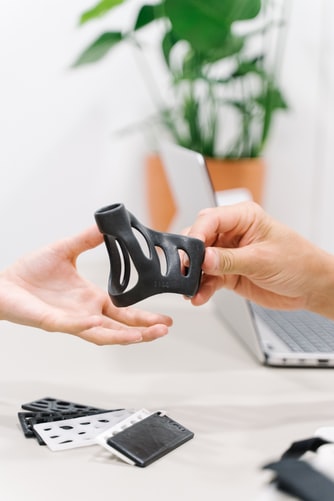

Nowadays, many consumers are looking forward to choosing handmade jewellery over mass-produced Jewellery. But what really is handmade jewelry and why it is becoming so popular is an answer still untold. If you are looking for an answer, then you are at the right place. There are many different Jewellery making techniques in use today. All of them have their pros and cons. Taking into consideration handmade jewellery, we will discuss all the different types of handmade jewelry here.
Handmade jewellery is a type of jewelry that is made by an artist without the use of any mass-manufacturing machines. There is no fixed look at how handmade jewelry should look like. It can range from simple hand-made pendants to jewellery made of intricate designs that take several days and skilled techniques to finish. All handmade jewellery certainly has one thing in common. It is that all the handmade jewelry is simply made by the hands of an artist with the help of very basic tools.
When you choose to buy a piece of handmade jewellery, you are basically going to get a unique design every time you buy something. This is because there is always something new that handmade jewellery has to offer. There is always little variation between the style of an individual making handmade jewellery due to the sole nature of hand-making anything. There can be the slightest of imperfections in the design cuts but each handmade jewellery that you buy is not only the artistic reflection of the artist but also has a hidden story of the artist that you are buying from.
When you buy handmade jewelry, you are helping small business owners to grow and pursue their passion. Some of these handmade jewelry businesses are as small as stay-at-home businesses. Most of them are small business owners that are superly active in their local community. They also often source their raw materials and stones from other small businesses. If you buy from these small businesses, you are in a way supporting the small businesses that are also shaping the economy.
Handmade jewelry artists are also more inclined towards using ethically-sourced materials. Therefore, small handmade jewelry businesses are usually a great source for anyone who is looking for ethical and sustainable jewellery. These businesses mostly tend to source their materials from companies that have a reputation for recycling scrap metal. This ensures extreme authenticity and sustainability in the handmade jewellery that is being made by the artist.
The simplest type of handmade jewellery is known as hand-assembled jewellery. Hand-assembled jewellery is one of the greatest ways to offer unique and personalized jewellery to the customer at an affordable price. This type of jewellery making usually involves creating earrings, necklaces, and bracelets from pre-made chains and jewellery findings. It is the perfect way to get started with handmade jewellery making as this technique is an easy way to learn handmade jewellery making that will take only a few days.
Handmade wire-wrapped Jewellery is easy to spot as it uses a lot of wire. Most jewellers use wire wrapping in order to create charms and pendants with various stones and beads. In simpler words, wire-wrapped jewellery is a decorative frame that is embellished with other ornaments that are attached to the coils of wrapped wire. One can even witness some wire wrapping experts come up with intricate and delicate wire-wrapped jewellery designs. Wire wrapping is a handmade jewellery technique that takes a long time and practice to master.
Handmade fabricated jewelry covers a wide variety of jewellery styles that ranges from traditional gemstone rings to extensively creative art jewellery. Fabricated jewelry basically requires metalsmithing techniques and jewellery bench skills. Jewelers use a metal saw in order to cut out the basic shape of a jewellery piece or to cut some intricate details in the piece. Many jewellers also use soldering techniques to attach different components of a jewelry piece to each other. Fabrication handmade jewellery technique takes some time and dedication to learn. Once a jeweler gets a hang of how it is done, then they are able to manipulate the metal in a wide variety of ways.
Handmade beaded jewelry can be some of the simplest or most intricate Jewellery designs depending upon the beads you use. Jewellers can use beads on a single strand of a stringing material to create any kind of bracelets and necklaces. Letters or numbers for personalization, fun-shaped beads to show off artistic interests or a big statement bead with smaller ones framing it are all possibilities. However, with quite a few practices even a small bead jewellery maker can create larger and more intricate designs for beaded jewelry.
Handmade enameled jewelry is one of the greatest ways to add various pops of color to your metal jewellery pieces. Enameling is a technique that is basically done for fusing glass powder to the surface of metals to create a permanent bond. There are various ways by which one can add enamel to handmade jewellery. One such way is torch-firing which is the most popular technique. Because you can easily heat up the enamel on your metal with your soldering torch, this is considered the most basic and inexpensive enameling method. A kiln is required for most enameling techniques, as it heats the jewellery piece more slowly than a soldering torch.
These were some of the types of handmade jewelry you should definitely try. If you are one who is ready to start your own jewelry-making business, you can definitely take a jewellery design diploma course from JD institute. We at JD institute make sure you learn the ropes of jewellery designing. It is essential to have a base before starting your journey as a handmade jewelry designer. So, what are you waiting for? Join right now.